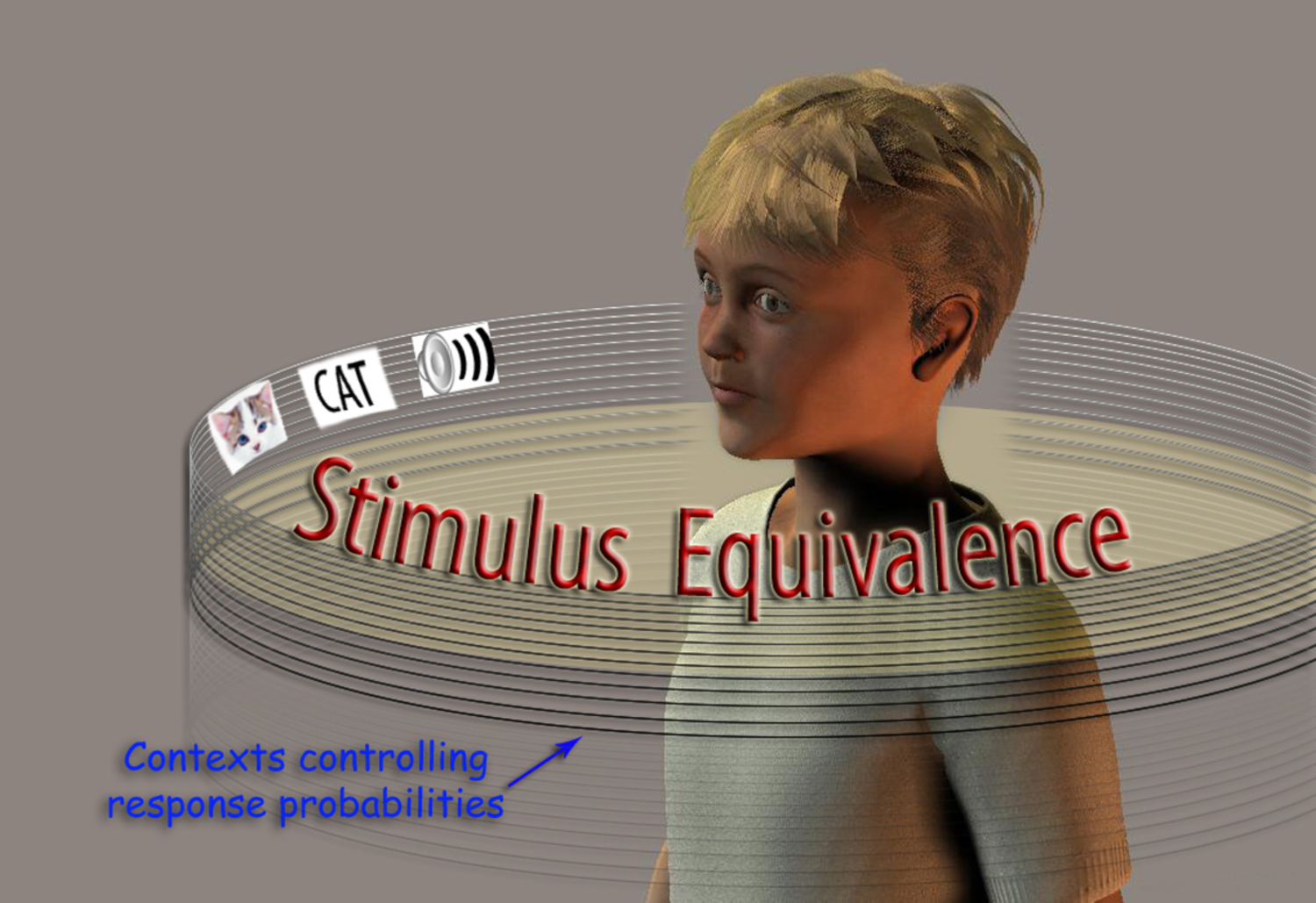
9. Stimulus Equivalence
How can we study the familiar? This is a question that artists address in their varied attempts to make the familiar unfamiliar.
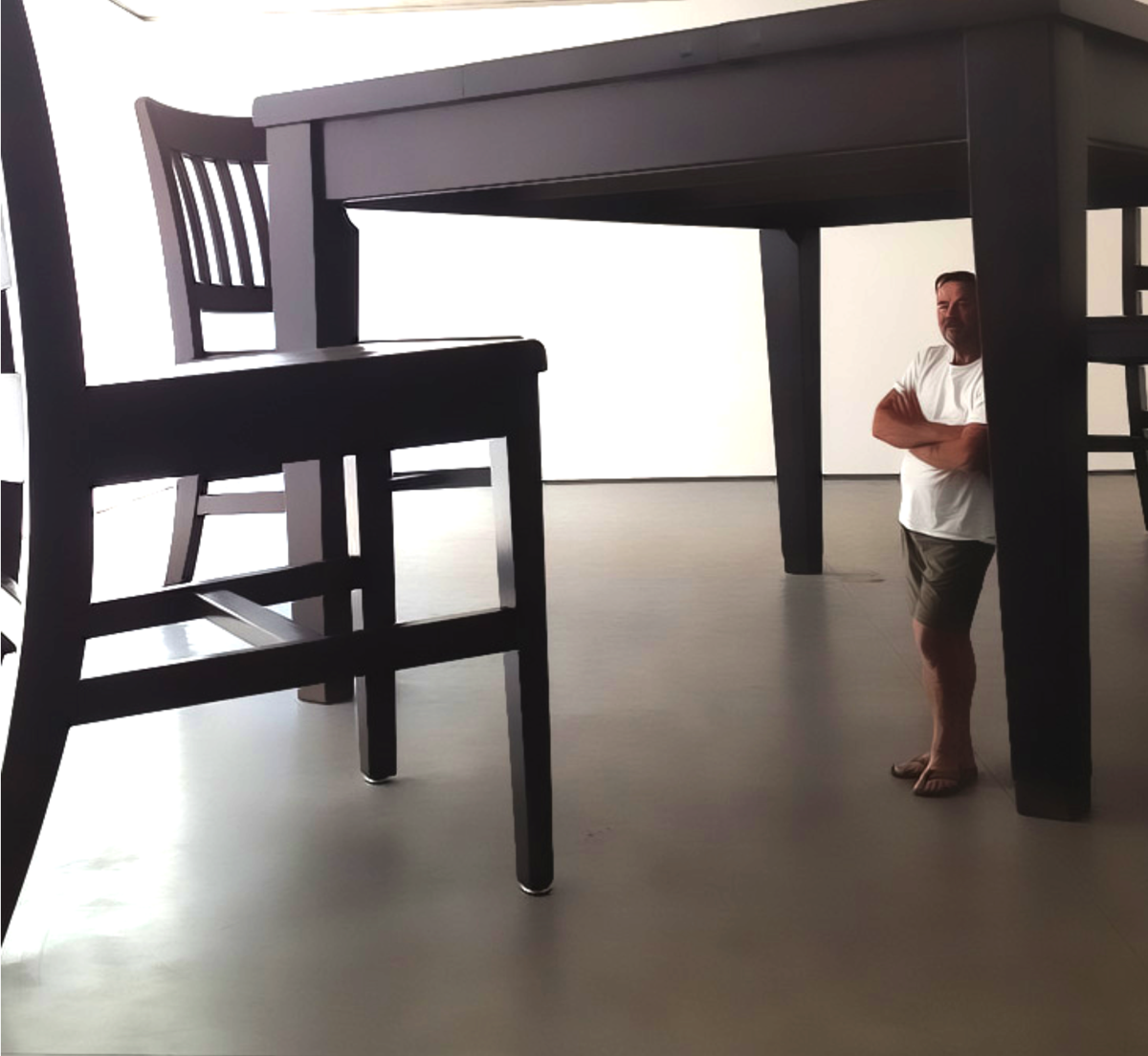
Why one might even want to study the familiar in the first place is another question worthy of serious attention.
For a science of behaviour, the question is of particular importance because the answer would open up avenues for helping us understand how we come to know the world around us.
So, then, how do we do it? How do we study the world around us, the familiar, when it doesn’t even occur to us that there is something to be studied?
Usually we don’t ask this sort of question until a problem arises, for example at work when we need to change management practices, or when something has gone wrong with a relationship that needs fixed.

This picture is something familiar to many, a plane trip. However, when this journey is examined with a fresh pair of eyes it looks rather odd.
We enter a long metal tube and some time later we exit into another world. Quite an experience, but for frequent flyers this is just another routine experience. For a kid, any journey through time is quite an experience until, that is, the consequences born of routines become established. And those consequences include a cessation in asking questions about how they arrived there, with the mind set and skills they acquire along the way.
There is a clue here for knowing how to study the familiar. Might it be that the secret to rekindling the wonderment of the world around us (i.e., seeing the familiar with fresh eyes) is to study how things become familiar for a child? That’s certainly one possibility and it is one avenue that has proven fruitful in recent years in the study of learning.
Figure 9.2 (plays in Movie 9.1a, make sure you have sound on) shows something unfamiliar to many children. Are you one of these children?
Not familiar? What about Fig. 9.4 (plays in Movie 9.1b, make sure you have sound on)?
In fact, we can say that the picture, the written word, and the sound all ‘mean’ the same thing. In other words, there is a relation between three stimuli such that they can be regarded as substitutable for each other.
Fig. 9.5 is another example of three stimuli that can be substituted for each other.
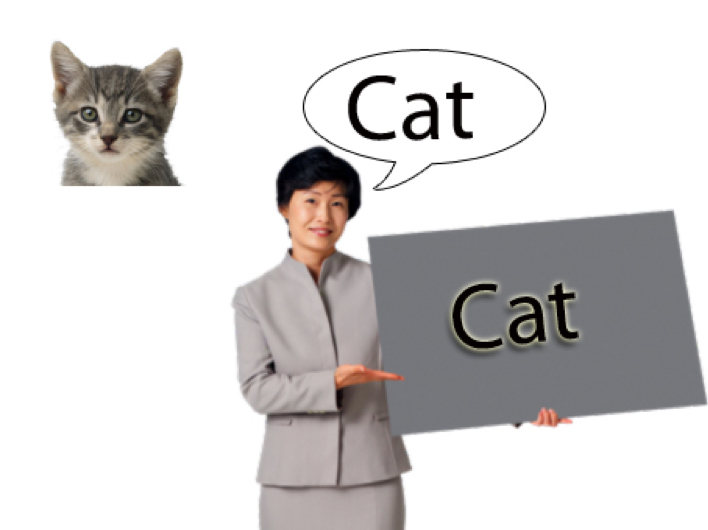
When you teach a child the relations between these stimuli you usually do so with the help of a simple piece of equipment, a book. You would normally point at words and pictures while at the same time saying the word “CAT”. Your ‘procedure’ would not be standardised in the scientific sense, but nevertheless there is a standard procedure all parents in all cultures would use. And when they use the procedure the result is the creation of what is generally called a ‘concept’ (Fig. 9.6).
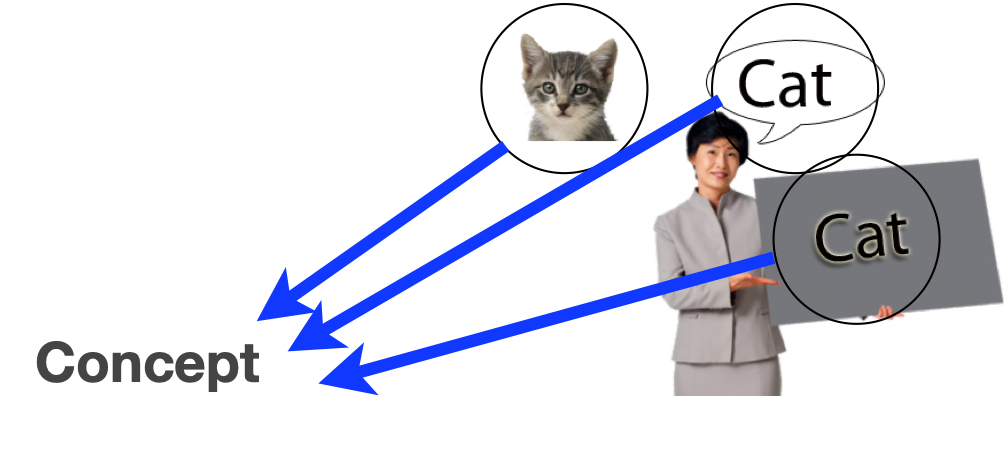
In the everyday world around complex relations between stimuli and their associated discriminative control operate on numerous levels, giving us the ‘experience of the moment’.
This analysis sounds simple and obvious, and that’s precisely the problem with dealing with the familiar. You don’t have to be a behaviour analyst to come to similar conclusions. This is where findings from laboratory studies can be illuminating.
Let’s back track a little and look again at the three stimuli that make up a simple concept. This time we will do what they do in laboratory studies and give them arbitrary names as shown in Fig. 9.7.
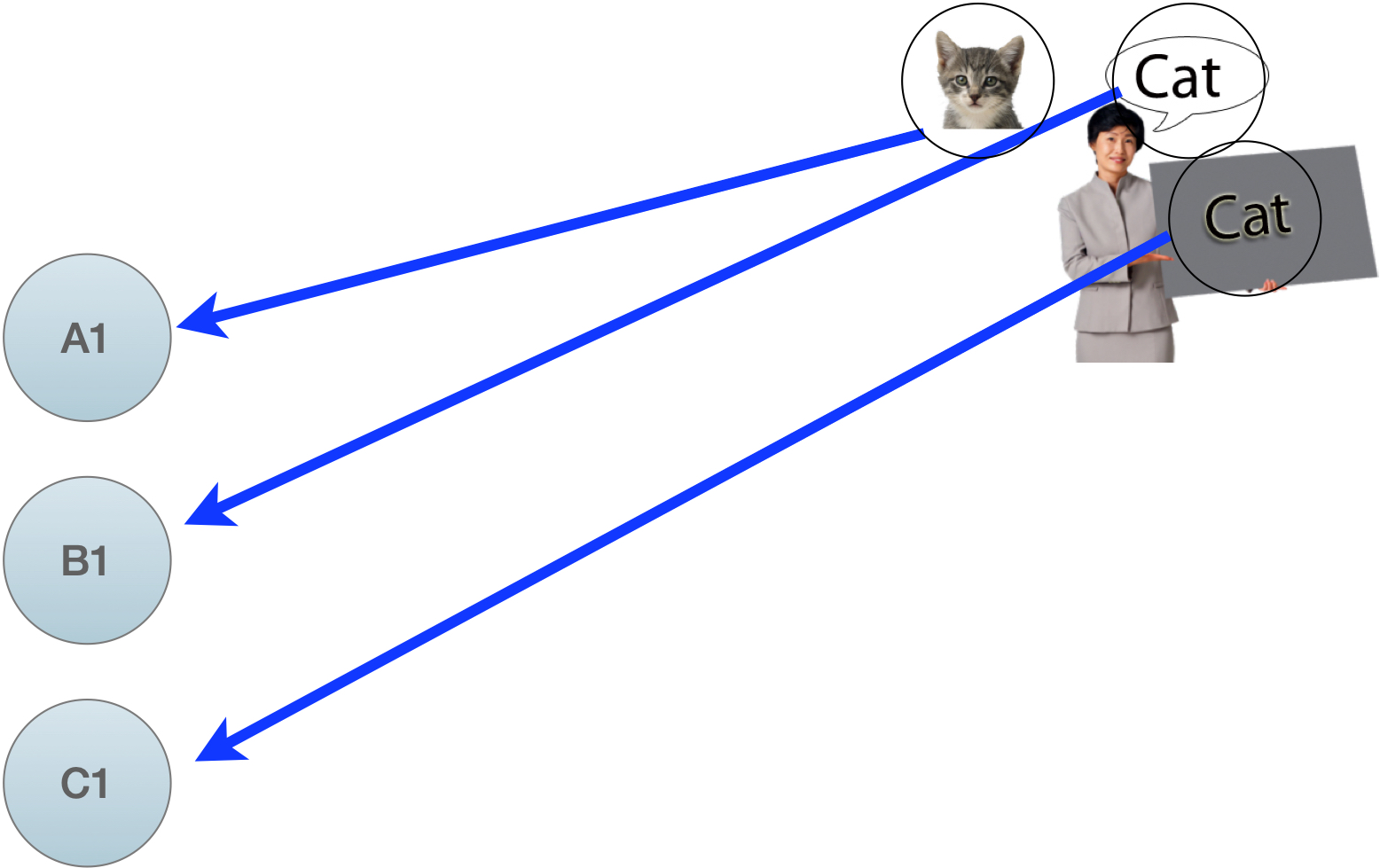
Note, though, that whilst the labels A1, B1, and C1 are arbitrary, labels in all languages are arbitrary and they only derive their meaning because of convention. It could be the case, for example, that instead of using the word ‘Cat’ in English, history might have left us using the word ‘Toing’ instead. But it didn’t, and we are stuck with the word ‘Cat’.
Anyway, back to A1, B1 and C1. Here’s an interesting observation from the laboratory. If a relation is trained between A1 and B1 and then another relation is trained between A1 and C1, what happens is that a relation between B1 and C1 appears spontaneously (the “Ah, Ha!” experience). This finding is usually shown in a diagram such as that shown in Fig. 9.8.
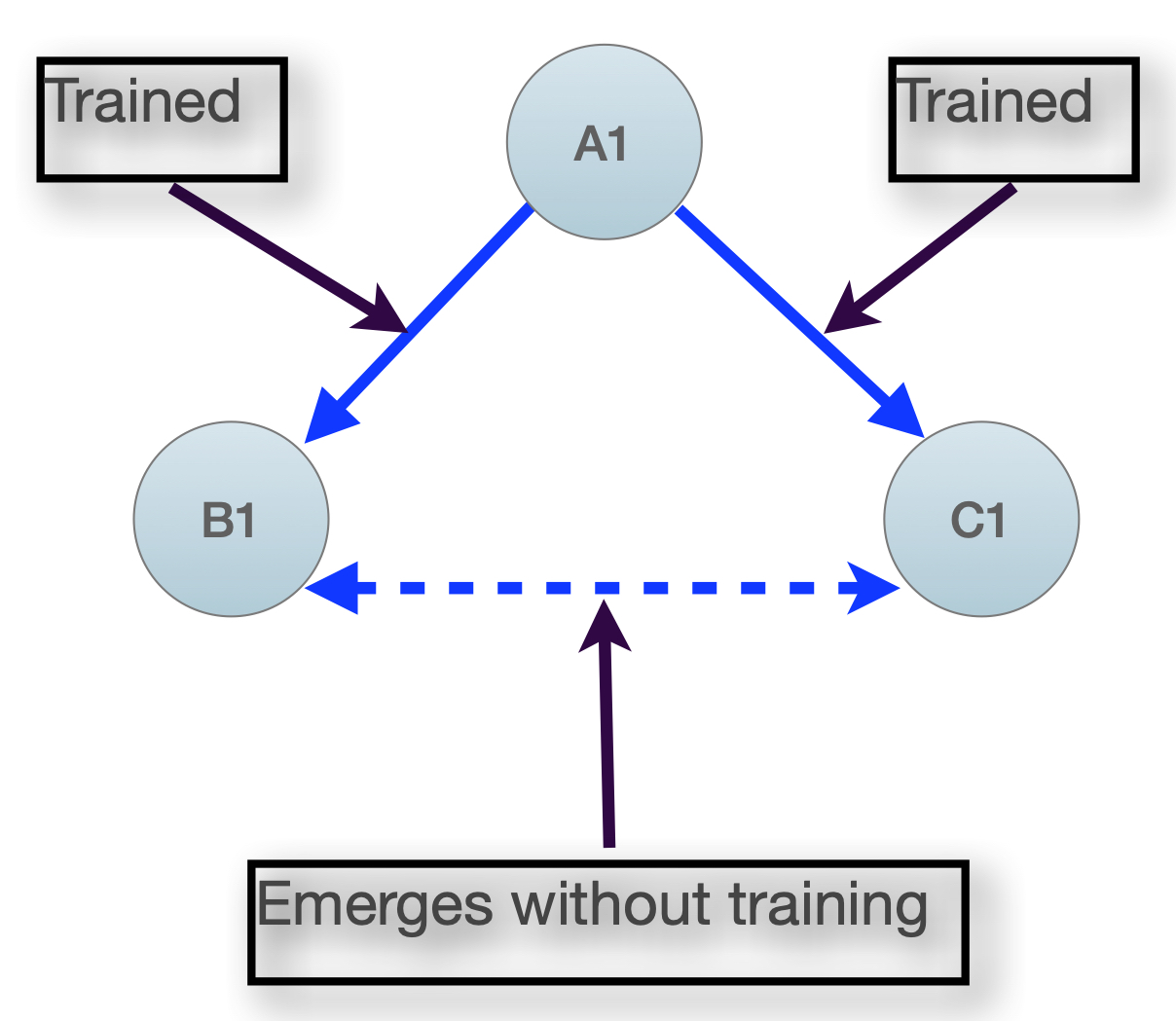
In everyday language the logic of this finding looks like this: A=B and A=C so therefore B=C. We can extend this finding by increasing the number of trained relations. There are a number of different ways to train relations. In this next image, where a linear procedure was used to train a 5-member class, there is an increase in the number of untrained relations (Fig. 9.9). In fact, the number of emergent relations grows exponentially with increasing numbers of trained relations.
In this image, solid arrows indicate trained relations, dotted arrows indicate emergent relations that appear after training.
The procedures that have been devised to investigate emergent relations allows us to understand associative networks in a very practical way. Instead of simply guessing how associative networks might emerge, we can construct networks and then examine them in finer detail.
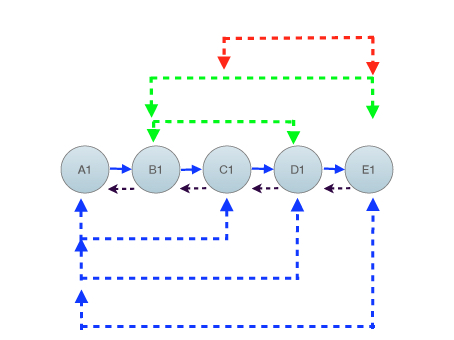
Social symbols
A simple experiment in social categorisation shows just how symbols that are trained within a community constitute members of an equivalence classes; the symbols in this instance include a mixture of names and political emblems. People who grow up in Northern Ireland are able to identify the religious identity of a person through his/her name. Thus, for example, if you name happens to be Patrick, the chances are you have been educated in the Catholic tradition. In a study by Watt, Keenan, Barnes, and Cairns (1991), Catholic names like this were trained to nonsense syllables using a standard conditional discrimination procedure. Following this, the nonsense syllables were trained to Protestant emblems like, for example, Union Jack, as shown in this image.
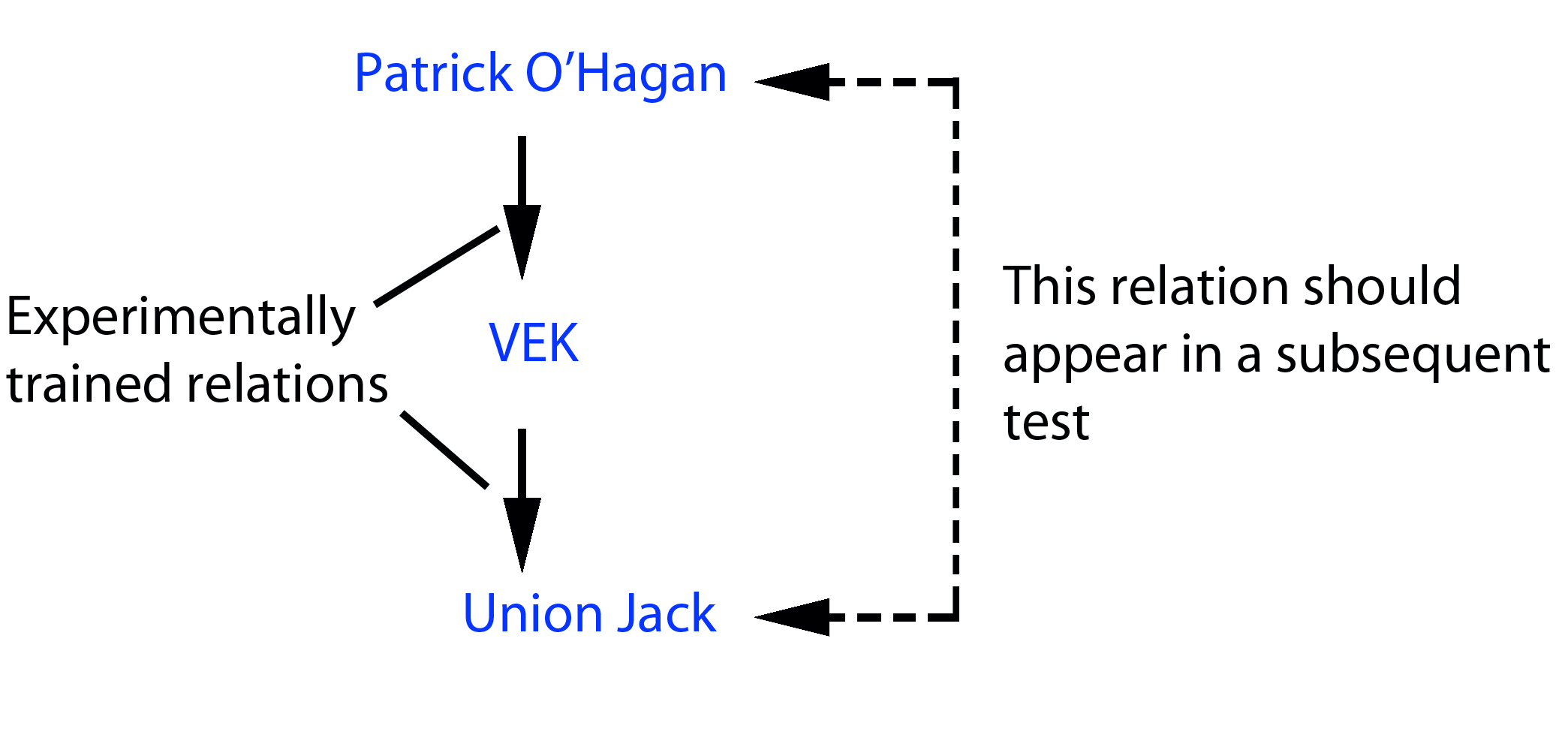
The test for emergent equivalence relations would be to present Union Jack as the Sample stimulus and underneath it present Patrick O’Hagan along with some other stimuli from which to choose (Comparison Stimuli). Fig. 9.11 gives one example of such a possible test arrangement.

It was found that people from outside of N. Ireland selected the emergent relation that was expected from training. However, some participants who live in N. Ireland selected the other name. Why? Well, it so happens that this other name, Billy Wilson, is viewed by people generally in N. Ireland as a Protestant name. Thus, this socially loaded symbol (Billy Wilson) disrupted the expected emergent relation because the testing environment contained a clash between two classes of symbolic stimuli. In effect, the experiment represents an indirect measure of attitudes that have been established in the community.
Transfer of Function
Another avenue of research within the study of stimulus equivalence involves an additional bit of training. It so happens that once an equivalence class has been established, a behaviour trained to one of the stimuli appears at the other stimuli without any additional training. In Fig. 9.12, for example, if a person was trained to engage in a specific piece of behaviour in the presence of A1, then that same behaviour would appear also in the presence of the other stimuli.
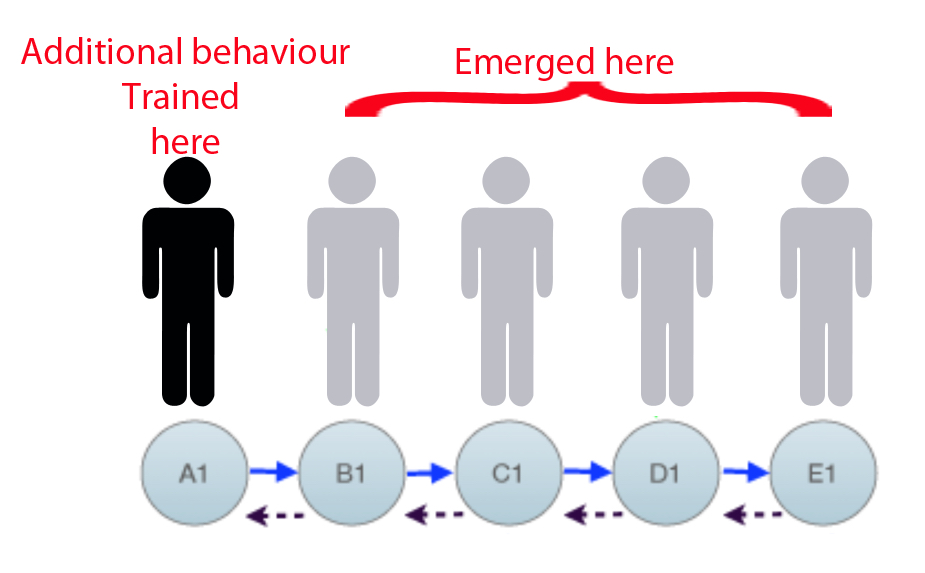
It is important to note that in an equivalence class, stimuli need not be physically similar. Thus, the appearance of the behaviour at the other stimuli is NOT an example of Stimulus Generalization, where stimuli differ along one aspect of a physical dimension like colour. This finding of ‘transfer/transformation of function’ helps to explain why sometimes we see behaviour in the presence of a stimulus but where there was no specific training in the presence of that stimulus (Movies 9.2 & 9.3).
Creativity
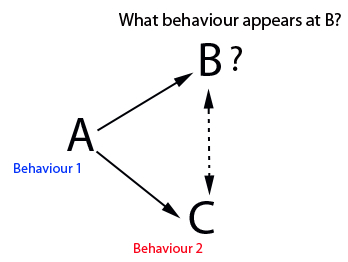
Because the relation A-B is directly trained whereas the relation C-B is not directly trained, it might be the case that Behaviour 1 appears at B instead of Behaviour 2. Alternatively, it might be the case that we get some merging of repertoires and that both Behaviour 1 AND Behaviour 2 appear at B, which would be a creative solution to the problem faced by a test subject. There is no way to know the answer in advance. We need an experiment, and this fact in itself shows the value of an inductive approach to doing research. We simply ask, “I wonder what would happen if I did this!” An experiment by McVeigh and Keenan (2009) addressed this type of question and they found that on occasions repertoires did indeed merge. In other words, the behaviour at B was a creative response, but the interesting point is that its origins are now traceable to the previously trained “responses. The experiment conducted by McVeigh and Keenan involved a more complicated procedure than that shown above. Recently, however, an undergraduate dissertation conducted with the first author used this simple experimental design with other kinds of behaviours. The behaviour trained at A was left arm stretched out and the behaviour trained at C was touch nose with right hand. The entire sequence of training and testing conditions is shown in Fig. 9.14.
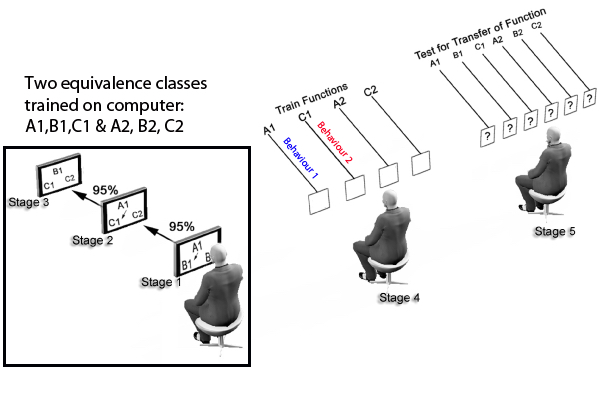
Initially, two separate equivalence classes were established using a conditional discrimination procedure controlled by computer software. In the next stage, behaviours were trained in the presence of A1 (left arm stretched out) and C1 (touch nose with right hand). Immediately afterwards, all 6 stimuli were presented in a semi-random sequence in Trial 1; participants were instructed to respond to each stimulus in the manner they considered appropriate. Trials 2-10 continued in the same manner. A brief summary of the results is shown in Fig. 9.15.
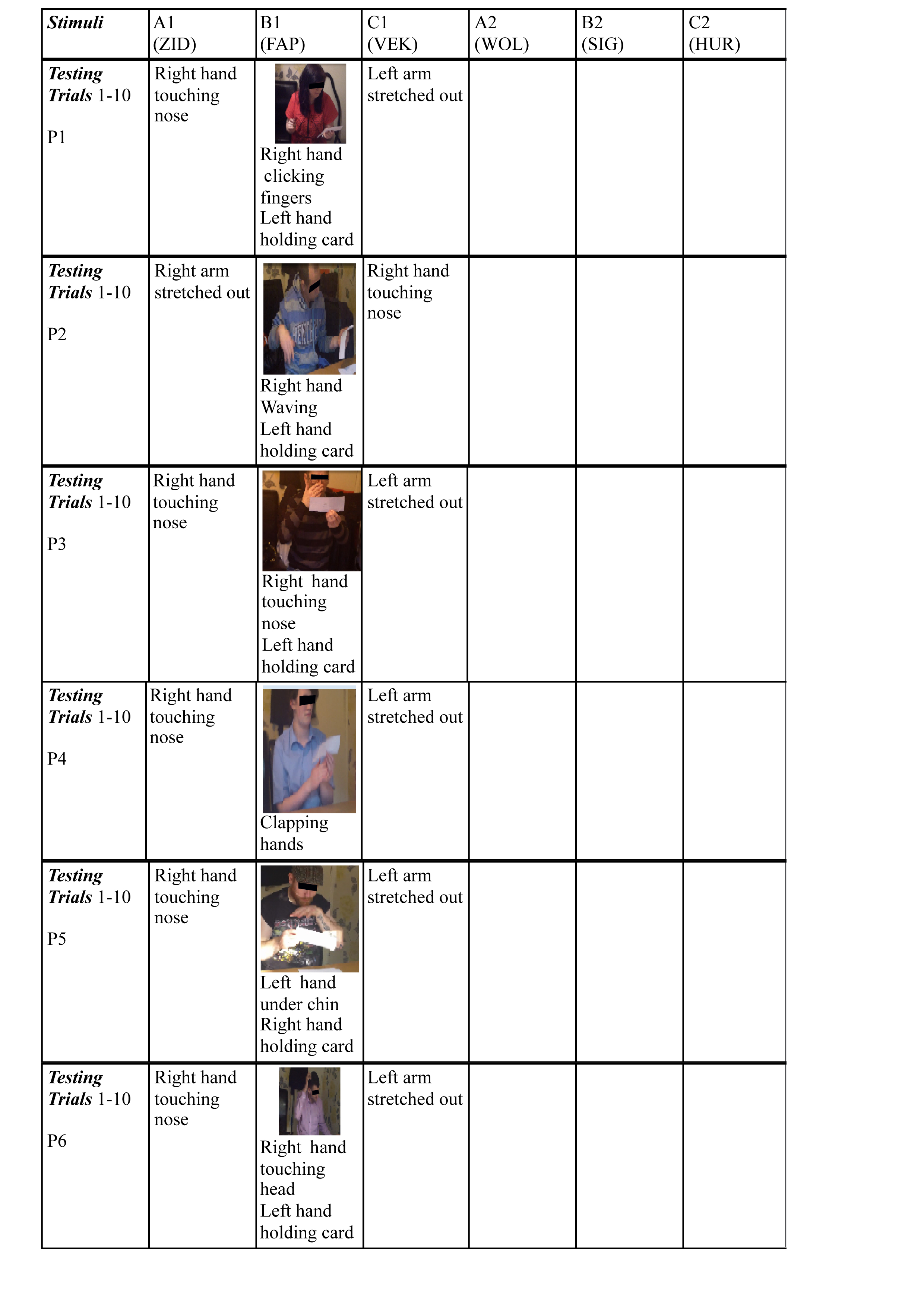
Apart from participant P2, behaviours trained at A1 and C1 appeared on each of the 10 trials; P2 used his right arm for all behaviours. What is interesting are the results for behaviours appearing at B1. Performance for each participant was consistent across each of the 10 trials. However, each participant did something different. These creative acts were all voluntary responses, but when you examine them you can see the remnants of the behaviours trained at A1 and C1. In other words, these new behaviours were blends of some sort or other of the originally trained responses. Why they should all be different is another question, probably related to their differing histories that are brought to bear in the study. In conclusion, though, we can see that creative responses can be investigated using equivalence classes and there are indications that the origins of creativity are related somehow to the merging of existing behavioural repertoires.
Bear in mind also, that we must be careful in this line of research not to slip into a mentalistic analysis of the findings (Movie 9.4). To do so would be an example of familiar ways of thinking interfering with the development of the new perspective being cultivated.